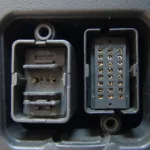An Arduino OBD2 logger offers a cost-effective and customizable way to tap into your vehicle’s data. Whether you’re a DIY enthusiast, a professional mechanic, or simply curious about your car’s performance, using an arduino obd2 logger can provide valuable insights into its inner workings. This guide will delve into the world of Arduino OBD2 logging, covering everything from the basics to advanced techniques.
Understanding the Power of an Arduino OBD2 Logger
What exactly is an Arduino OBD2 logger, and why should you care? Simply put, it’s a system that uses an Arduino microcontroller to read data from your vehicle’s OBD2 port and record it for later analysis. This data can include everything from engine speed and fuel consumption to fault codes and sensor readings. This makes it a powerful tool for diagnosing car problems, optimizing performance, and even just satisfying your curiosity about what’s happening under the hood. For those interested in DIY projects involving their vehicles, learning about an obd2 reader arduino is a great place to start.
Setting up Your Arduino OBD2 Logger
Building your own logger is surprisingly straightforward. You’ll need an Arduino board (like the Uno or Nano), an OBD2 adapter, and some connecting wires. The adapter acts as the bridge between your car’s OBD2 port and the Arduino. You’ll also need a software library, such as the obd2 c library, to help the Arduino interpret the data it receives. The process involves connecting the adapter to the Arduino, uploading the necessary code, and then plugging the adapter into your car’s OBD2 port.
Choosing the Right OBD2 Adapter
Selecting the correct OBD2 adapter is crucial for a successful setup. Several types are available, each with its pros and cons. Bluetooth adapters are convenient for wireless data transfer, while WiFi adapters offer greater range and data speeds. USB adapters provide a reliable wired connection, often preferred for their stability. Ensure the adapter you choose is compatible with both your Arduino and the software you intend to use. Exploring obd2 to arduino can offer valuable insights into choosing the right adapter.
Decoding the Data from your Arduino OBD2 Logger
Once you have your logger set up, you can start collecting data. The software you choose will display the information in a readable format. You can then analyze this data to identify trends, diagnose problems, and optimize your car’s performance. For instance, by tracking fuel consumption over time, you might identify driving habits that are impacting your mileage. Alternatively, monitoring engine temperature can alert you to potential cooling system issues. What about using an esp8266 obd2? This combination opens up a world of possibilities for IoT projects related to your vehicle.
Troubleshooting Common Issues
Like any DIY project, you may encounter some bumps along the road. Common issues include connection problems, incorrect data readings, and software conflicts. Checking your wiring, ensuring the adapter is properly seated in the OBD2 port, and verifying the software settings can often resolve these issues.
Advanced Applications of an Arduino OBD2 Logger
Beyond basic data logging, an arduino obd2 logger can be used for more complex projects. You could create a custom dashboard displaying real-time data, integrate it with other sensors for a more comprehensive view of your vehicle’s performance, or even develop a system for automated alerts based on specific data thresholds. A more advanced application involves setting up an arduino obd2 data logger for continuous monitoring and data analysis.
“An OBD2 logger empowers car owners to take control of their vehicle’s health. It’s a game-changer for proactive maintenance and understanding how your driving habits impact performance.” – David Miller, Automotive Engineer
“With a little creativity, an Arduino OBD2 logger can be the foundation for some truly innovative automotive projects. The possibilities are limited only by your imagination.” – Sarah Johnson, Electronics Engineer
In conclusion, an arduino obd2 logger is a valuable tool for anyone wanting to understand their vehicle better. Whether your goal is simple data logging or complex project integration, this accessible technology offers a powerful and customizable solution.
FAQ
- What is an OBD2 port?
- Can I use any Arduino board for this project?
- What software do I need for data logging?
- Is it legal to use an OBD2 logger?
- Where can I find OBD2 codes definitions?
- How can I troubleshoot connection issues with my OBD2 logger?
- What are some advanced applications of OBD2 data logging?
Looking for more helpful resources? Check out these related articles: arduino obd2 data logger and obd2 reader arduino.
Need support? Contact us via WhatsApp: +1(641)206-8880, Email: [email protected] or visit us at 789 Elm Street, San Francisco, CA 94102, USA. We offer 24/7 customer support.
